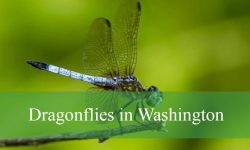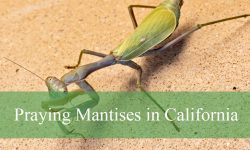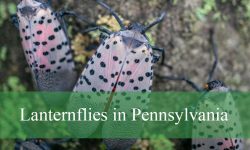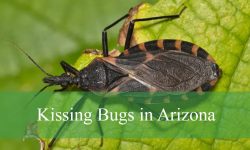Minnesota, with its sprawling forests, sparkling lakes, and expansive prairies, provides a haven for a remarkable variety of wildlife. Among its most striking inhabitants are eagles, birds that embody strength, freedom, and majesty. These raptors capture the imagination of birdwatchers and nature enthusiasts alike, offering a glimpse into the intricate balance of predator and prey within the state’s ecosystems.
For those interested in avian wildlife, Minnesota presents an exciting opportunity to observe two eagle species in the wild: the Bald Eagle (Haliaeetus leucocephalus) and the Golden Eagle (Aquila chrysaetos). Each species displays distinct physical traits, behaviors, and habitats, making them unique subjects for study and observation. By exploring their characteristics in depth, one can gain a greater appreciation of these apex predators and the role they play in maintaining the natural order.
This comprehensive guide provides detailed information on identification, size, behavior, diet, reproduction, and habitat, along with interesting insights into the life of these two eagles. Whether you are an experienced birder or a curious newcomer, understanding these majestic birds enhances the experience of spotting them across Minnesota’s diverse landscapes.
Bald Eagle (Haliaeetus leucocephalus)

Identification and Physical Characteristics
The Bald Eagle is a symbol of North American wildlife, instantly recognizable due to its striking appearance. Adult Bald Eagles have a white head and tail that sharply contrasts with their dark brown body and wings. Their bright yellow beak and eyes give them a piercing, commanding gaze. Juvenile Bald Eagles appear very different from adults, displaying mottled brown plumage with white streaks and a dark beak. This juvenile coloring persists for several years, gradually transforming into the characteristic adult plumage. The difference between juvenile and adult birds makes accurate identification a rewarding challenge for observers.
Size and Wingspan
Bald Eagles rank among North America’s largest birds of prey. They typically measure between 28 and 40 inches in length and possess an impressive wingspan of six to eight feet. Their sturdy build, combined with powerful wings, allows them to soar high above rivers, lakes, and forests, conserving energy while scanning for prey. Their flight is graceful yet purposeful, making them a captivating sight as they glide with minimal effort across vast distances.
Behavior and Hunting Techniques
Bald Eagles are opportunistic hunters, primarily relying on fish as their main food source. They employ a hunting strategy called plunge diving, in which they swoop from the air, talons extended, to snatch fish from the water’s surface. These birds also exhibit scavenging behavior, feeding on carrion and occasionally stealing prey from other birds. Bald Eagles are highly territorial during nesting seasons, often engaging in aerial displays to defend their territory. They can also be surprisingly social outside the breeding season, congregating in large numbers near lakes and rivers that support abundant food resources.
Diet
Fish dominate the Bald Eagle’s diet, including species such as trout, perch, and carp. When fish are scarce, they supplement their diet with waterfowl, small mammals, and occasionally carrion. Bald Eagles are known to follow fishing boats or other birds to opportunistically scavenge food, demonstrating their adaptability and intelligence as predators. Their diet reflects the state’s rich aquatic ecosystems, where lakes and rivers provide ample sustenance for thriving populations.
Nesting and Reproduction
Bald Eagles form monogamous pairs and often return to the same nesting sites for several consecutive years. Their nests, called eyries, are enormous structures made from sticks and lined with softer materials. These nests, usually built high in tall trees near water, can reach six feet in diameter and weigh over a ton. Females typically lay one to three eggs, with both parents sharing incubation duties. Chicks hatch after about five weeks and remain in the nest for 10 to 12 weeks before fledging. The close cooperation between parents ensures the young develop hunting skills and strength required for survival.
Habitat and Distribution in Minnesota
Bald Eagles are widespread across Minnesota, thriving in areas that combine ample water sources with tall trees for nesting. Large rivers such as the Mississippi and Minnesota, along with lakes throughout the state, offer ideal environments. These birds can be observed year-round, although they are particularly active during winter months when they gather near open water. The combination of Minnesota’s abundant fish populations and forested landscapes ensures that Bald Eagles maintain strong, healthy populations throughout the state.
Fun Facts
Despite their name, Bald Eagles are not actually bald; the term refers to their white-feathered head. These birds possess extraordinary vision, allowing them to spot prey from considerable distances. They are highly loyal to their mates, often forming long-term pair bonds that endure for life. Returning to the same nesting site year after year, Bald Eagles demonstrate remarkable site fidelity and territorial awareness. Their presence is not only an indicator of ecosystem health but also a symbol of resilience, having rebounded dramatically from previous population declines.
Golden Eagle (Aquila chrysaetos)

Identification and Physical Characteristics
The Golden Eagle is a formidable predator, admired for both its power and elegance. Adults are dark brown with golden-brown plumage on the nape of their necks, giving the species its name. They have a robust, muscular body, sharp talons, and a hooked beak—adaptations that make them highly effective hunters. Juveniles are darker with prominent white patches on the wings and tail, which gradually fade with age. The Golden Eagle’s physical characteristics make it a distinct presence in the skies, and its solitary hunting habits contrast with the more social behavior of Bald Eagles.
Size and Wingspan
Golden Eagles are slightly larger than Bald Eagles in body length, measuring 30 to 40 inches, with a wingspan ranging from six to 7.5 feet. Their powerful wings allow them to soar effortlessly over expansive terrain, and their muscular build enables high-speed dives when pursuing prey. This combination of strength and agility makes the Golden Eagle one of the most effective aerial predators in North America.
Behavior and Hunting Techniques
Golden Eagles are solitary hunters known for their stealth, patience, and high-speed aerial maneuvers. They prey on medium-sized mammals such as rabbits, squirrels, marmots, and occasionally young deer. Birds, including grouse and cranes, also form part of their diet. Golden Eagles often utilize elevated perches to survey the land, then swoop down in swift, precise dives to capture prey. Their hunting behavior demonstrates not only physical prowess but also advanced cognitive skills, as they adapt their strategies to terrain and prey availability.
Diet
The diet of Golden Eagles is diverse and reflects their adaptability to different habitats. Small to medium-sized mammals are preferred, but they will also take birds and reptiles when available. Their ability to hunt a wide range of prey ensures survival in regions with fluctuating food sources. Golden Eagles are apex predators, playing an essential role in controlling populations of prey species and maintaining ecological balance.
Nesting and Reproduction
Golden Eagles build large nests on cliffs or tall trees, which they may reuse and enlarge over multiple years. The female typically lays one to four eggs, with two being most common. Both parents share incubation duties, providing warmth and protection. In times of food scarcity, competition among chicks can be intense, with the older or stronger chick often outcompeting its sibling. Fledging occurs after approximately 10 to 12 weeks, and young eagles remain dependent on their parents for several months.
Habitat and Distribution in Minnesota
Golden Eagles are less commonly observed in Minnesota than Bald Eagles, largely due to their migratory behavior. They primarily appear in the state during spring and fall, favoring open areas such as grasslands and prairies. Unlike Bald Eagles, they do not breed in Minnesota, but the state lies along their migratory path, allowing observers to occasionally witness these majestic raptors. Their preference for wide-open spaces and minimal human disturbance makes sightings a rare but remarkable experience.
Fun Facts
Golden Eagles are among the fastest birds, capable of diving at speeds up to 200 miles per hour when hunting. They have exceptional eyesight, capable of spotting small prey from high altitudes. Across cultures, Golden Eagles have been admired for centuries, often featuring in mythology, folklore, and as national symbols. Their solitary nature and hunting prowess have earned them a reputation as some of the most skilled predators in the animal kingdom.
Comparison of Bald and Golden Eagles
Feature |
Bald Eagle |
Golden Eagle |
|---|---|---|
Size |
28–40 inches length; 6–8 feet wingspan |
30–40 inches length; 6–7.5 feet wingspan |
Coloration |
White head and tail with dark brown body |
Dark brown with golden-brown nape |
Diet |
Primarily fish; also scavenges |
Mammals and birds; skilled hunter |
Habitat |
Near large bodies of open water |
Open and mountainous regions |
Nesting Sites |
Tall trees near water |
Cliffs or tall trees |
Migration |
Year-round resident in Minnesota |
Primarily migratory; occasional in Minnesota |
Behavior |
Soars over water; plunge dives for fish |
Stealthy hunting; high-speed dives |
Best Time and Places to Observe Eagles in Minnesota
Bald Eagle
Bald Eagles can be observed throughout the year in Minnesota, but the best time to see them is during the winter months from November to March. During this period, many lakes and rivers remain partially open, attracting large numbers of eagles to feed on fish. The cold season also concentrates them near open water, making sightings more predictable and frequent.
Top locations for Bald Eagle watching include the Mississippi River, the Minnesota River, and lakes in the southeastern and central parts of the state. Wildlife refuges such as the Mississippi National River and Recreation Area and the National Eagle Center in Wabasha are excellent spots to observe these majestic birds up close. Forested areas along rivers provide ideal nesting and perching sites, so early morning or late afternoon outings often yield the most sightings.
Golden Eagle
Golden Eagles are rarer in Minnesota and are mostly seen during migration periods, typically in early spring (March–April) and late fall (October–November). These birds pass through open areas and prairies while traveling between breeding grounds in the western United States and wintering regions farther south.
Best places to spot Golden Eagles include the western prairies of Minnesota, grasslands, and open farmland. Elevated vantage points, such as hilltops or bluffs, increase the chances of observing these eagles soaring high in the sky. Because sightings are uncommon, anyone hoping to see a Golden Eagle should plan excursions during clear days when visibility is good, and keep binoculars or spotting scopes ready for distant views.
Conclusion
Minnesota’s landscapes, from its dense forests to wide-open prairies, provide vital habitats for these magnificent raptors. The Bald Eagle, with its striking white head and tail, graces the state year-round, often observed soaring above lakes and rivers. The Golden Eagle, rarer in the region, captivates observers during its seasonal migrations, demonstrating extraordinary hunting skill and aerial agility.
By learning about their physical traits, behaviors, diets, and nesting practices, we gain a deeper understanding of these iconic birds and the ecosystems they inhabit. Observing eagles in Minnesota is both a privilege and a reminder of the importance of conserving natural habitats. These birds are living symbols of strength and resilience, and witnessing their flight is a testament to the wild spirit of the state.
Whether exploring rivers, lakes, or open prairies, encountering a Bald or Golden Eagle is an awe-inspiring experience that leaves a lasting impression. These raptors embody the beauty and complexity of Minnesota’s wildlife and serve as ambassadors for the protection of natural environments.
Frequently Asked Questions About Eagles in Minnesota
What are the main types of eagles found in Minnesota?
Minnesota is home to two primary eagle species: the Bald Eagle (Haliaeetus leucocephalus) and the Golden Eagle (Aquila chrysaetos). Bald Eagles are common year-round, especially near lakes and rivers, while Golden Eagles are rare visitors, mostly seen during migration in spring and fall.
How can I identify a Bald Eagle?
Bald Eagles are easily recognizable by their white head and tail contrasting with a dark brown body and wings. Adults have a yellow beak and eyes, while juveniles are mottled brown with white streaks and a dark beak. Their large size, with a wingspan of 6 to 8 feet, also helps distinguish them from other birds.
How can I identify a Golden Eagle?
Golden Eagles have dark brown plumage with golden-brown feathers on the back of their neck. Juveniles may have white patches on the wings and tail. They are slightly larger in body length than Bald Eagles, and their wingspan ranges from 6 to 7.5 feet. Golden Eagles are more solitary and are often seen soaring over open prairies or high terrain.
When is the best time to see Bald Eagles in Minnesota?
The best time to observe Bald Eagles is during the winter months (November to March). During this period, eagles congregate near partially frozen rivers and lakes, making sightings more predictable. Early mornings and late afternoons are ideal for observing hunting and feeding behavior.
When is the best time to see Golden Eagles in Minnesota?
Golden Eagles are most often seen during migration periods, in early spring (March–April) and late fall (October–November). They travel over open grasslands and prairies, and sightings are rare, so clear days with good visibility increase your chances.
What habitats do Bald Eagles prefer?
Bald Eagles favor forested areas near large bodies of water, such as lakes, rivers, and marshes. These habitats provide ample food in the form of fish, as well as tall trees for nesting and perching. They can be found across nearly every county in Minnesota.
What habitats do Golden Eagles prefer?
Golden Eagles prefer open areas such as prairies, grasslands, and foothills. They use cliffs or tall trees for nesting, but in Minnesota, they are mainly observed during migration and do not breed in the state.
What do Bald Eagles eat?
Bald Eagles primarily feed on fish, including trout, perch, and carp. They also eat waterfowl, small mammals, and occasionally carrion. They are opportunistic feeders and sometimes steal prey from other birds.
What do Golden Eagles eat?
Golden Eagles are versatile hunters and feed on medium-sized mammals like rabbits, marmots, and young deer, as well as birds such as grouse and cranes. They hunt using stealth and high-speed dives, making them highly effective predators.
Are Bald Eagles and Golden Eagles endangered in Minnesota?
Bald Eagles are no longer endangered and have stable populations in Minnesota thanks to conservation efforts. Golden Eagles are not endangered either, but sightings in Minnesota are rare due to their migratory behavior.
Can I see Bald Eagles and Golden Eagles at the same location?
It is uncommon to see both species together because Bald Eagles prefer aquatic habitats and Golden Eagles favor open grasslands and prairies. However, during migration or in areas with mixed habitats, it is possible to observe both species within the same region.






